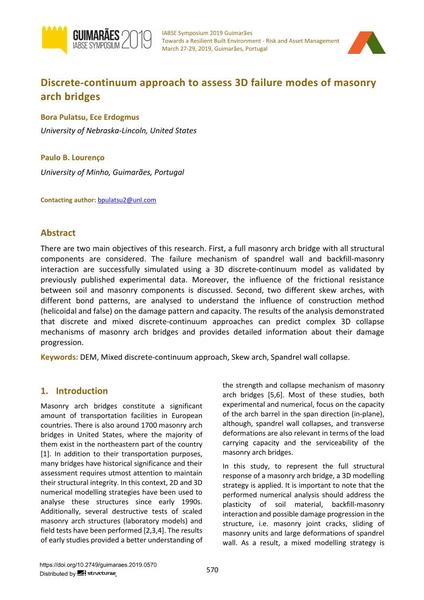Discrete-continuum approach to assess 3D failure modes of masonry arch bridges

|
|
|||||||||||
Bibliographic Details
| Author(s): |
Bora Pulatsu
(University of Nebraska-Lincoln, United States)
Ece Erdogmus (University of Nebraska-Lincoln, United States) Paulo B. Lourenço |
||||
|---|---|---|---|---|---|
| Medium: | conference paper | ||||
| Language(s): | English | ||||
| Conference: | IABSE Symposium: Towards a Resilient Built Environment Risk and Asset Management, Guimarães, Portugal, 27-29 March 2019 | ||||
| Published in: | IABSE Symposium Guimarães 2019 | ||||
|
|||||
| Page(s): | 570-578 | ||||
| Total no. of pages: | 9 | ||||
| DOI: | 10.2749/guimaraes.2019.0570 | ||||
| Abstract: |
There are two main objectives of this research. First, a full masonry arch bridge with all structural components are considered. The failure mechanism of spandrel wall and backfill-masonry interaction are successfully simulated using a 3D discrete-continuum model as validated by previously published experimental data. Moreover, the influence of the frictional resistance between soil and masonry components is discussed. Second, two different skew arches, with different bond patterns, are analysed to understand the influence of construction method (helicoidal and false) on the damage pattern and capacity. The results of the analysis demonstrated that discrete and mixed discrete-continuum approaches can predict complex 3D collapse mechanisms of masonry arch bridges and provides detailed information about their damage progression. |
||||
| Keywords: |
DEM Mixed discrete-continuum approach Skew arch Spandrel wall collapse
|
||||
